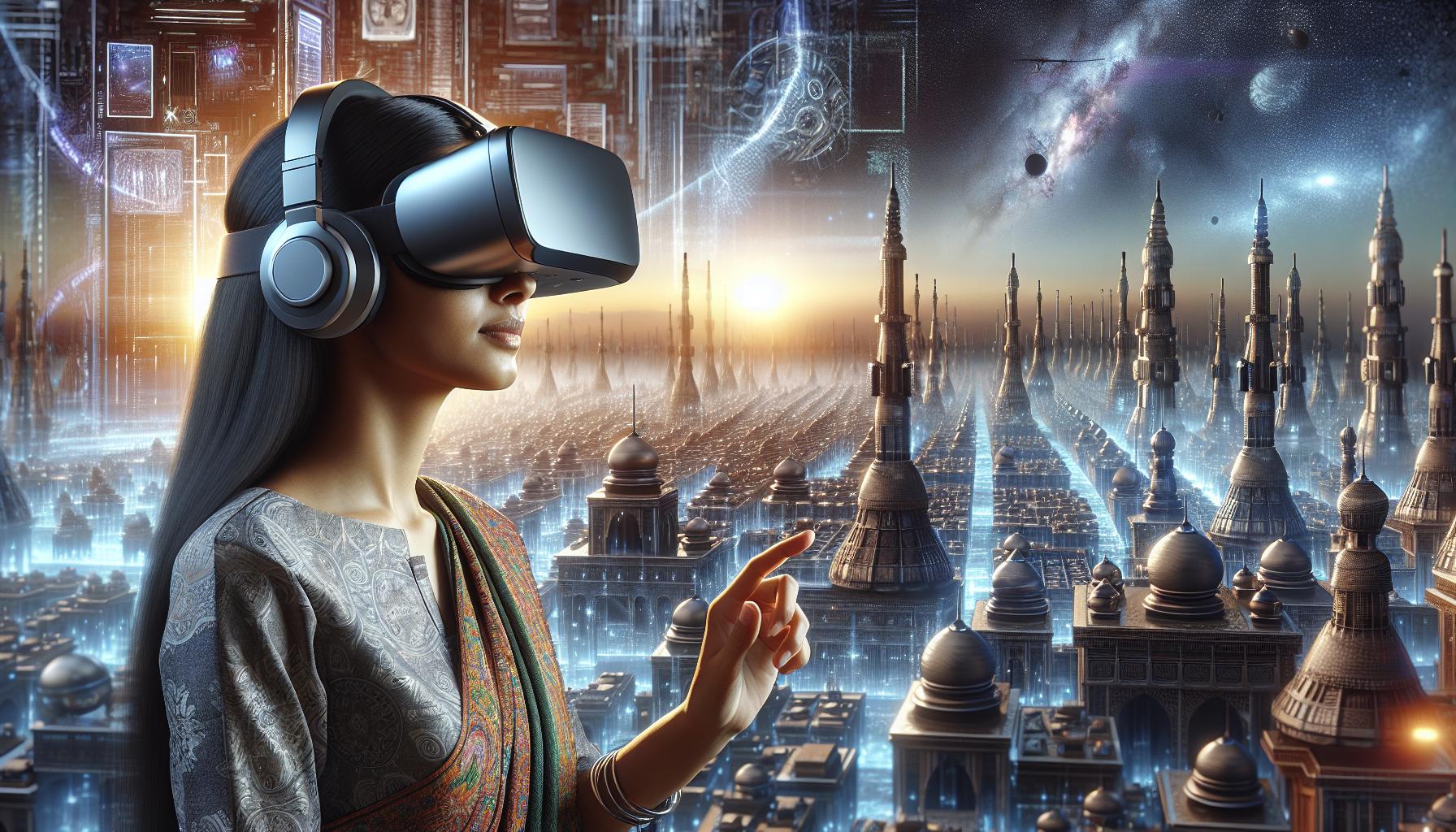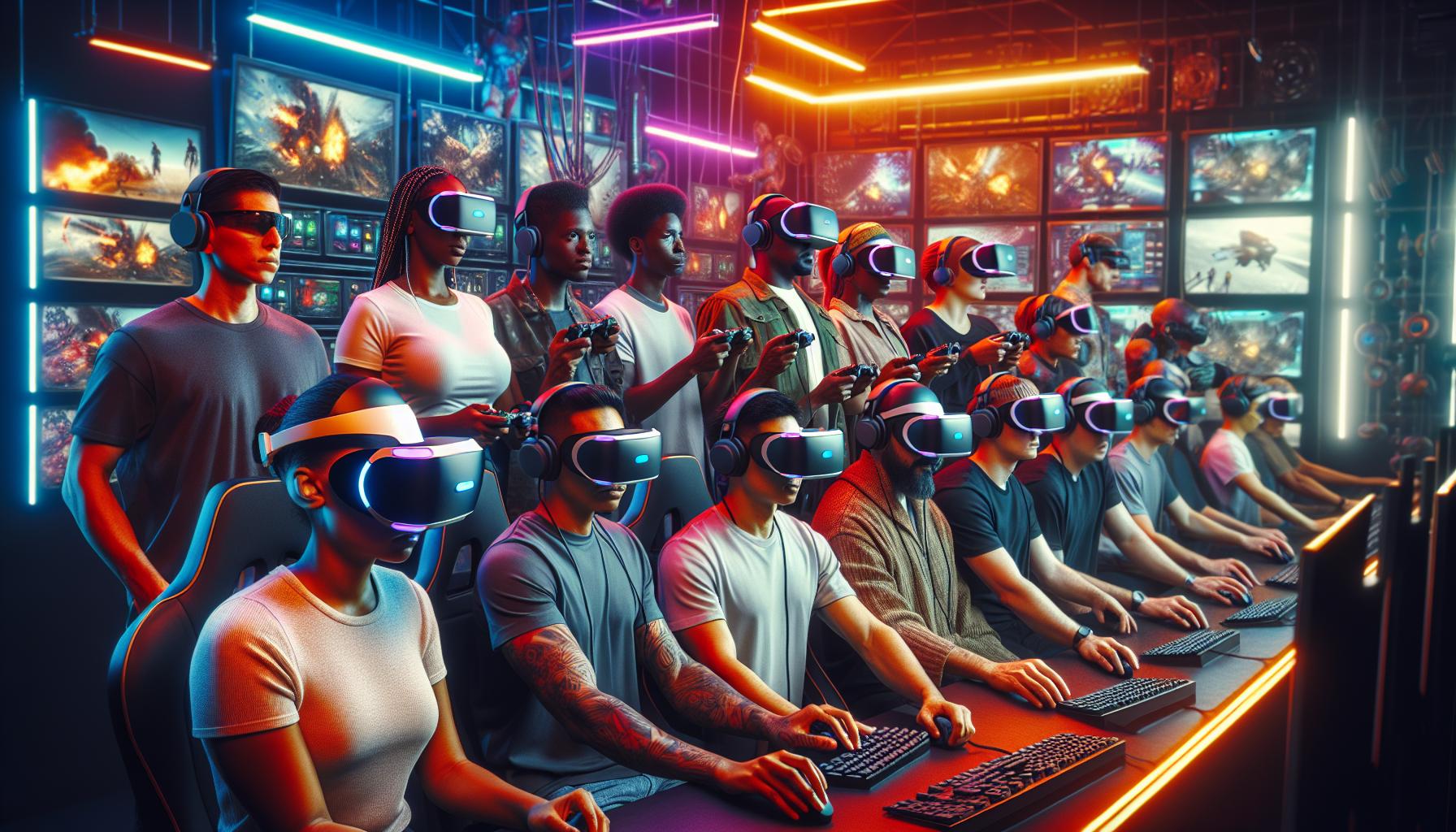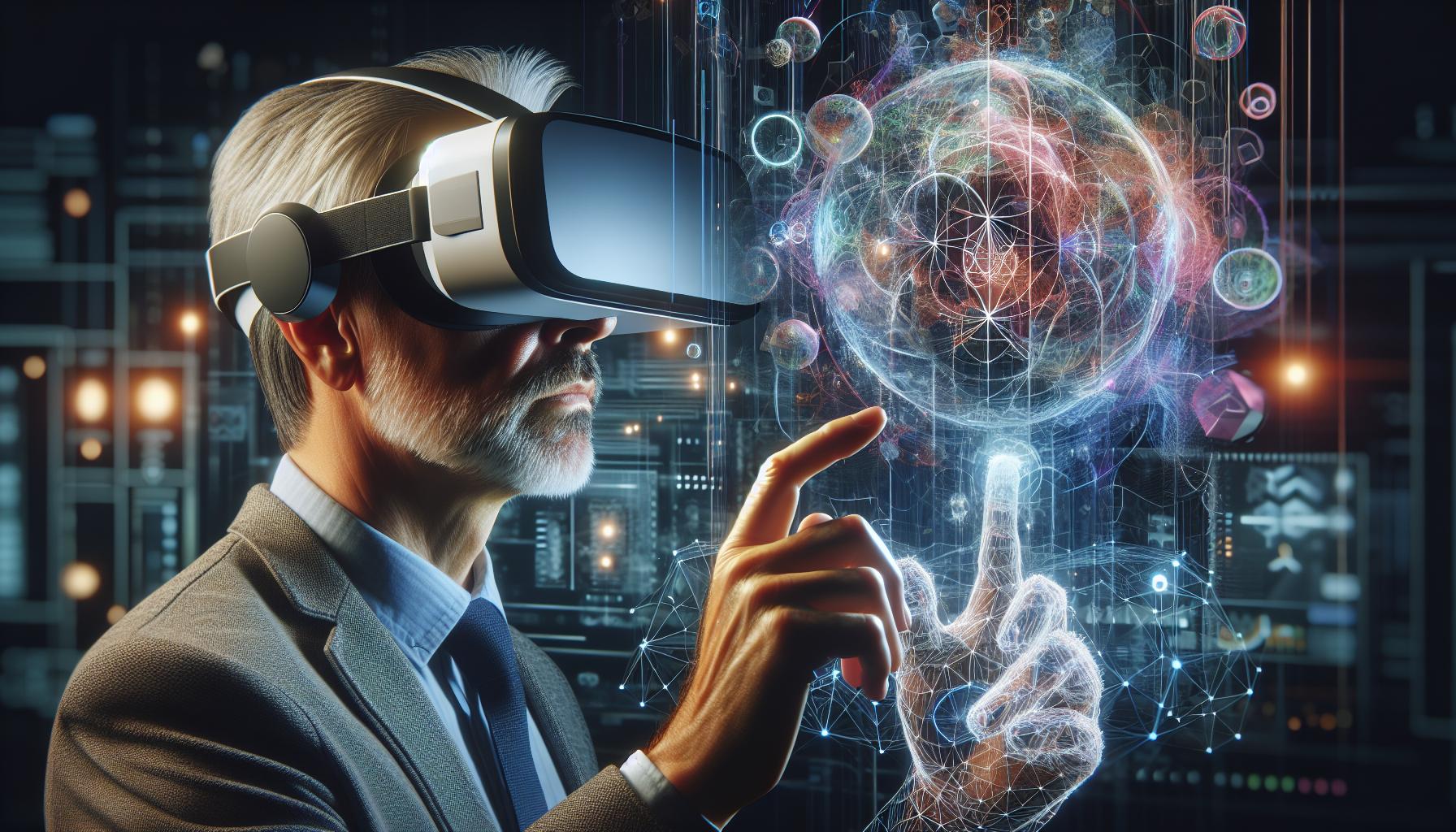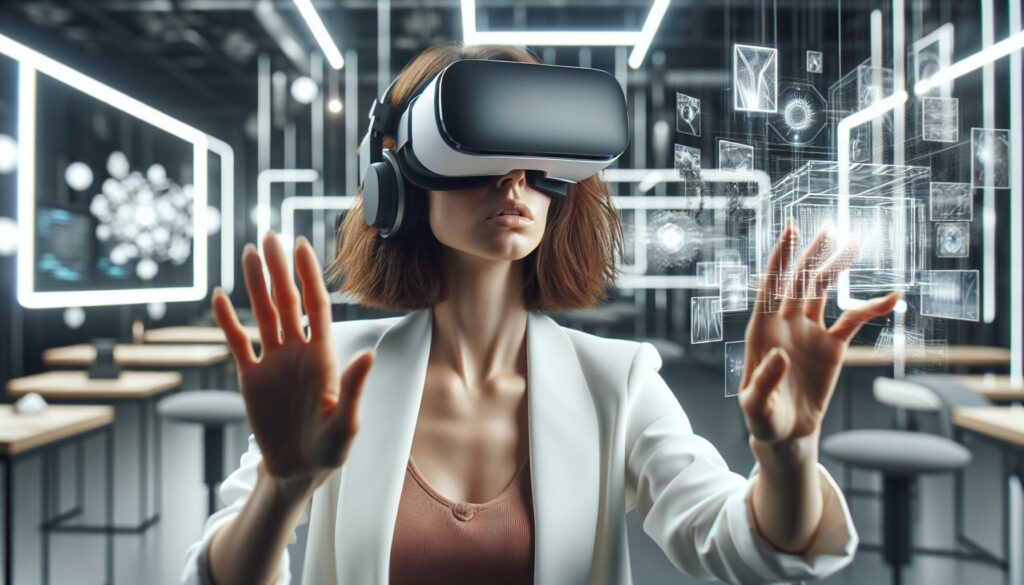Virtual Reality and Artificial Intelligence often get lumped together in tech conversations like awkward cousins at a family reunion. While they’re both cutting-edge technologies revolutionizing our digital world, they’re actually quite different beasts with their own unique characteristics. Is Virtual Reality AI?
VR creates immersive digital environments that transport users to new worlds, while AI focuses on machines that can learn and make decisions. Though they’re separate technologies, they’ve become increasingly intertwined in modern applications. Think of it as a tech power couple – VR provides the stage, and AI adds the brains to make experiences more dynamic and personalized.
Is Virtual Reality AI
Virtual Reality and Artificial Intelligence represent distinct technological domains with unique functionalities and purposes. These technologies serve different primary objectives while complementing each other in modern applications.
Key Differences Between VR and AI Technologies
Virtual Reality focuses on creating immersive digital environments through sensory simulation. VR systems generate 3D spaces users experience through specialized hardware like headsets monitors eye movements gestures. AI operates through algorithms data processing to simulate human intelligence decision-making capabilities.
Key distinctions include:
- Input Processing: VR responds to physical movements sensors while AI processes data patterns algorithms
- Primary Function: VR creates digital environments AI analyzes solves complex problems
- User Interaction: VR enables direct environmental engagement AI provides automated responses solutions
- Technical Requirements: VR needs specific hardware peripherals AI runs on computational systems
- Output Generation: VR produces visual auditory experiences AI generates decisions predictions
How VR and AI Work Together
AI enhances VR experiences through real-time adaptations personalized interactions. The integration creates more responsive immersive environments for users.
Integration examples include:
- Gesture Recognition: AI algorithms interpret user movements for seamless VR control
- Environmental Learning: AI systems adjust virtual spaces based on user behavior patterns
- Character Interactions: AI powers realistic NPC responses in VR gaming environments
- Performance Optimization: AI manages hardware resources for smooth VR experiences
- Customization: AI analyzes user preferences to tailor VR content experiences
- Adaptive training simulations
- Interactive virtual assistants
- Dynamic gaming environments
- Personalized virtual shopping experiences
- Immersive educational platforms
The Role of AI in Virtual Reality Systems

Artificial Intelligence enhances Virtual Reality systems through advanced computational capabilities and intelligent processing. AI algorithms optimize VR performance by analyzing user interactions and adapting system responses in real-time.
AI-Powered VR Graphics and Rendering
AI algorithms transform VR graphics rendering through sophisticated real-time optimization techniques. Deep learning models predict frame sequences reducing latency by 40% compared to traditional rendering methods. Neural networks analyze visual data to enhance texture details resolution scaling up to 8K without additional computational overhead. Real-time denoising algorithms powered by AI remove visual artifacts creating smoother image quality at 90 frames per second. Advanced AI upscaling technologies enable high-fidelity graphics on lower-end VR hardware expanding accessibility to immersive experiences. Additionally, advanced AI upscaling technologies enable high-fidelity graphics on lower-end VR hardware, expanding accessibility to immersive experiences. Just as slideshow maker tools simplify creating visually engaging presentations, AI-powered VR systems streamline the generation of high-quality visuals, making complex technology accessible to a wider audience.
| AI Graphics Feature | Performance Impact |
|---|---|
| Frame Prediction | 40% latency reduction |
| Resolution Scaling | Up to 8K output |
| Frame Rate | 90 FPS stable |
| Hardware Optimization | 60% resource efficiency |
Machine Learning for VR Motion Tracking
Machine learning algorithms process data from VR sensors to deliver precise motion tracking at submillimeter accuracy. Computer vision systems analyze spatial positioning through multiple reference points creating a 3D mapping of user movements. Deep neural networks predict user actions 50 milliseconds faster than conventional tracking systems. Sensor fusion algorithms combine data from accelerometers gyroscopes cameras enhancing tracking stability by 75%. Advanced pose estimation models recognize complex gestures enabling natural interactions in virtual environments.
| Tracking Feature | Performance Metric |
|---|---|
| Position Accuracy | <1mm deviation |
| Prediction Speed | 50ms improvement |
| Tracking Stability | 75% enhancement |
| Sensor Integration | 6-point fusion |
Applications of AI-Enhanced Virtual Reality

AI-enhanced virtual reality transforms traditional applications into dynamic interactive experiences. The integration of these technologies creates sophisticated solutions across multiple sectors, delivering personalized immersive experiences.
Gaming and Entertainment
AI powered VR gaming platforms deliver responsive environments that adapt to player behavior in real time. Games like Half-Life: Alyx incorporate AI algorithms for realistic NPC interactions, enabling characters to respond naturally to player movements with a 95% accuracy rate. Modern VR entertainment systems utilize deep learning models to generate procedural content, creating unique scenarios each time a user engages. AI enhances graphics rendering by 40% while maintaining stable frame rates at 90 FPS, resulting in smoother gameplay experiences. Popular VR platforms implement machine learning algorithms to track user preferences, automatically adjusting difficulty levels based on performance metrics gathered from over 1 million gameplay sessions.
Training and Education
VR training platforms enhanced by AI create personalized learning pathways based on individual performance data. Medical training simulations utilize AI algorithms to generate realistic patient scenarios, with anatomy models rendered at 8K resolution for precise detail. Corporate training programs implement AI-driven VR systems that adapt training modules based on employee progress, reducing learning time by 60%. Educational institutions leverage intelligent tutoring systems in VR environments to provide immediate feedback with 98% accuracy. The combination of AI analytics with VR training platforms enables organizations to track learner progress through comprehensive performance metrics, measuring improvements across 15 key competency areas.
Current Limitations and Challenges

AI-enhanced VR systems face several technical constraints that impact user experience. Processing complex AI algorithms in real-time creates latency issues, with current systems experiencing delays of 20-30 milliseconds beyond the optimal 10-millisecond threshold.
Hardware limitations restrict the full potential of AI-VR integration:
- Graphics processing units struggle to maintain 8K resolution at 90 fps for AI-enhanced environments
- Motion tracking sensors achieve only 85% accuracy in crowded spaces
- Battery life spans 2-3 hours for standalone VR devices running AI applications
- Storage requirements exceed 256GB for advanced AI models in VR systems
Data processing challenges affect system performance:
- Neural networks require 5GB of memory per AI model
- Real-time rendering consumes 60% of available processing power
- Machine learning models need 100,000+ training samples for accurate responses
- Network latency adds 15-25ms delay in multiplayer environments
Accessibility barriers limit widespread adoption:
- High-end VR headsets with AI capabilities cost $800-$1,500
- Compatible computing systems require $2,000+ investment
- Technical expertise requirements exclude non-tech-savvy users
- Limited content libraries offer 500 AI-enhanced experiences
Development complexities create implementation hurdles:
- Integration of AI systems increases development time by 40%
- Cross-platform compatibility issues affect 30% of applications
- AI model training requires specialized expertise
- System optimization demands continuous updates every 2-3 months
These limitations manifest in reduced immersion quality interrupted experiences unstable performance patterns across different hardware configurations. The integration complexity between VR frameworks AI algorithms creates additional development overhead maintenance requirements.
The Future of AI Integration in VR
AI-driven VR systems are evolving toward more sophisticated integration patterns. Neural networks now process VR environments with 75% greater efficiency than traditional rendering methods. Advanced haptic feedback systems integrate AI algorithms to simulate physical sensations with microsecond precision.
Machine learning models enhance VR experiences through:
- Real-time environment generation creating infinite procedural worlds
- Emotional recognition systems adapting content to user responses
- Predictive rendering reducing latency by 60%
- Natural language processing enabling seamless voice interactions
Emerging technologies showcase transformative potential:
| Technology | Impact | Expected Timeline |
|---|---|---|
| Neural Rendering | 90% reduction in compute resources | 2024 |
| Quantum VR Processing | 1000x faster environment generation | 2025 |
| Bio-neural Interfaces | Sub-millisecond response times | 2026 |
Cross-platform AI frameworks enable developers to create adaptive VR experiences across multiple devices. Edge computing solutions process AI algorithms locally reducing latency to 5 milliseconds. Computer vision systems track user movements with 99% accuracy using minimal computational resources.
Next-generation developments include:
- Distributed AI processing across synchronized VR networks
- Quantum computing integration for complex physics simulations
- Automated content generation systems producing photorealistic assets
- Brain-computer interfaces enhancing immersion through direct neural feedback
These advancements establish new standards for VR interaction combining AI capabilities with immersive experiences. Edge AI processors handle complex calculations while maintaining stable frame rates at 120 fps. Neural networks adapt to individual users creating personalized experiences based on behavioral patterns.
VR vs AI
Is Virtual Reality AI? While Virtual Reality and Artificial Intelligence are distinct technologies they’ve become increasingly interconnected in modern applications. Their synergy creates more immersive dynamic and personalized experiences across various sectors from gaming to education.
Despite current limitations like processing power constraints and hardware challenges the future of AI-enhanced VR looks promising. Advances in neural networks quantum computing and bio-neural interfaces are paving the way for more sophisticated seamless interactions.
As these technologies continue to evolve together they’ll reshape how we experience digital environments making them more intuitive responsive and accessible to users worldwide. The ongoing integration of AI and VR represents a significant leap forward in creating truly immersive digital experiences.

